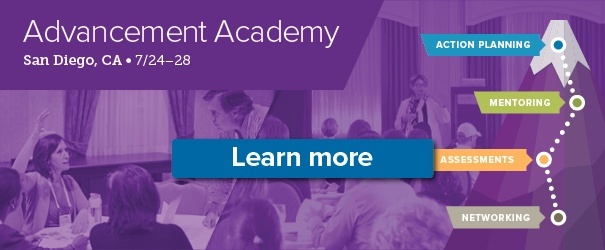As the Admission Director, you know that your faculty members have experience teaching feeder school graduates who now attend your school. So they know what types of background knowledge, skills, and experiences these newcomers bring. It’s likely that these students are a good “match” for your program and will have positive experiences on your campus. Also, when several students come from the same feeder school, they already have friends in their class at your school. Each of these factors eases the transition from the former school to the new, and reduces the adjustment time for students, teachers, and parents as they acclimate to your school’s culture.
Check Your Current Status
Review your records to determine how many students have come from each feeder school over the last three to five years and how they’ve fared. Talk to the teachers who taught these students in their first year with you. What was their transition to your program like? How well did they adjust academically? Socially? What contributions did they make to the life of your school? Talk to these new students and their parents, as well, to collect the same kind of information.
These data will give you a clearer picture of feeder school relationships, and may reveal some misconceptions and areas for improvement. Discuss any concerns that arise with your school’s academic leaders, decide how those issues will be addressed, and then develop an “action plan” to remove barriers and enhance relations with your “partner” schools.
As you work with each feeder school and its families, make it clear that your school is interested in attracting students only after they have completed the feeder school’s final grade. As a K–12 school, for example, you do not want to set your school up as competition for your K–6 feeder school. While there may be an occasional defection, don’t encourage “early” student departures from your feeder schools.
Strategies at Feeder Schools
- With the permission of the feeder school’s Head, meet with the students in the two highest grades. It may be appropriate for some of the school’s former students to accompany you to talk with the current students. This is most effective in recruiting middle and upper school students. They influence their family’s decision about which school to attend and place great stock in their peers’ opinions and experiences.
- Provide the feeder school with copies of your recruitment brochure, and other information (admission process, financial aid, testing dates, etc.).
- Develop a positive relationship with the teachers in the upper grades. Introduce them to your school and its programs. Provide information about your graduates’ next-level placements and successes. Tell them, “You have insight into your students’ strengths, needs, and interests. We want you to know what our school has to offer, should parents ask for your input.” When parents go to their children’s teachers for recommendations about next-level placement and these educators can speak positively about your school, it carries great weight.
- Ask each feeder school if you can mail recruitment information to the parents of their oldest students. Include an introductory letter from you or your School Head explaining that the family is receiving mailings from your school “because there has been a tradition of success when Main Street Prep graduates continue their education at I&P Academy.”
- Put the School Head, Management Team, and faculty of the feeder school on your mailing list for newsletters and other publications (again, with an introductory letter about why they are receiving material about your school).
- With parents’ permission, supply the feeder school with information about how its graduates have performed in your school. Besides academic achievements, include cocurricular activities, leadership positions, and any other outstanding contributions the feeder school’s students have made.
- If the feeder school holds a next-level placement night, be sure that you and your School Head attend. Also invite selected faculty members and students to go with you, if appropriate. (This works best when the program is informal—a “school fair” approach rather than a presentation to a seated audience.)
- Create a section on your website targeted to feeder school families. You might include frequently asked questions, testimonials, statistics, and a list of “graduate parents” from each feeder school that they can contact.
Strategies at Your School
- Hold a special open house just for the students and parents from a particular feeder school. Invite students from the top two or three grades. You will not only encourage students to apply for the coming academic year, but you will plant seeds for the future. Bringing these families together on your campus could spark group enthusiasm for your programs. The special attention to the students and families will be appreciated.
- Invite the School Head of the feeder school to visit your school. He or she can take a tour, meet the teachers (especially the ones the feeder school’s graduates could have in their first year), and stay for lunch with you and your School Head. To make the meal special, invite the feeder school’s alumni who now attend your school to join you.
- With the cooperation of the feeder school, invite its oldest students to visit your school for a day. Pair each visitor with a “buddy,” being sure to make good use of the feeder school’s former students.
- Make information about your summer program available to feeder school families, as long as the feeder school does not have its own program.
- If your school offers holiday and vacation care and a feeder school does not, open your program to that school’s families.
- Make your facilities (gymnasium, auditorium, etc.) available for rental, at a reduced rate, by the feeder school and its organizations.
- Invite the parents of the feeder school’s oldest students to your parent education programs and any social events like the auction, school fair, or golf tournament. Also invite students and families to attend sports events, plays, concerts, etc.
Once you’ve built strong relationships with feeder schools, keep working on them! You value the well-prepared students they send you, and they appreciate the quality next-level placement your school provides. Continue to work together, mutually building stronger bonds between your schools.
Additional ISM resources:
The Source for Advancement Vol. 14 No. 8 Six Ways to Welcome New Families Into the Fold
The Source for Advancement Vol. 12 No. 7 “Welcome!” Now What?—What You Send to Accepted Students
Additional ISM resources for Gold Consortium members:
I&P Vol. 37 No. 4 Look Beyond Your Traditional Marketing Allies
I&P Vol. 38 No. 2Who Is Responsible for Enrollment Management?
 hbspt.cta.load(2626348, '0deffb9c-8d71-4919-9bd5-b0c1a2c72746', {});
hbspt.cta.load(2626348, '0deffb9c-8d71-4919-9bd5-b0c1a2c72746', {}); 




